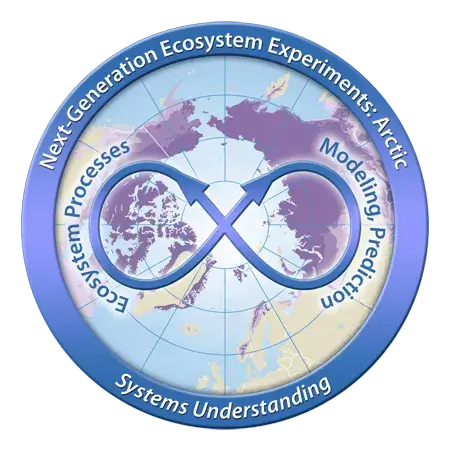Yang, Dedi, et al. “ Fine-Scale Landscape Characteristics, Vegetation Composition, and Snowmelt Timing Control Phenological Heterogeneity across Low-Arctic Tundra Landscapes in Western Alaska”. Environmental Research Ecology, vol. 3, 2025, https://doi.org/10.1088/2752-664X/ad9eb8.
Publications
Displaying 1 - 20 of 67
By year of publication, then alphabetical by title
- Zhang, Tianqi, et al. “A Region-Growing Segmentation Approach to Delineating Timberline from Satellite-Derived Tree Fractional Cover Products”. Remote Sensing, vol. 17, 2025, https://doi.org/10.3390/rs17122002.
- Iversen, Colleen M. “Abrupt Thaw Alters Phosphorus Cycling in Alpine Tundra”. Nature Climate Change, 2025, https://doi.org/10.1038/s41558-025-02466-z .
- Wang, Chen, et al. “Advancing the Understanding of Snow Accumulation, Melting, and Associated Thermal Insulation Using Spatially Dense Snow Depth and Temperature Time Series”. Geophysical Research Letters, vol. 52, 2025, https://doi.org/10.1029/2024GL114189.
- Miller, Charles E., et al. “Airborne Imaging Spectroscopy Surveys of Arctic and Boreal Alaska and Northwestern Canada 2017–2023”. Scientific Data, vol. 12, 2025, https://doi.org/10.1038/s41597-025-04898-w.
- Bachand, Claire, et al. “Brief Communication: Monitoring Snow Depth Using Small, Cheap, and Easy-to-Deploy snow–ground Interface Temperature Sensors”. The Cryosphere, vol. 19, no. 19, 2025, https://doi.org/10.5194/tc-19-393-2025.
- Wang, Xiaorong, et al. “Can large‐scale Satellite Products Track the Effects of Atmospheric Dryness and Soil Water Deficit on Ecosystem Productivity under Droughts?”. Geophysical Research Letters, vol. 52, 2025, https://doi.org/10.1029/2024GL110785 .
- Kim, Kwansoo, et al. “Determination of Ground Subsidence Around Snow Fences in the Arctic Region”. Lithosphere, vol. 2025, 2025, https://doi.org/10.2113/2025/lithosphere_2024_215.
- Shirley, Ian A, et al. “Disentangling the Impacts of Microtopography and Shrub Distribution on Snow Depth in a Subarctic Watershed: Toward a Predictive Understanding of Snow Spatial Variability”. Journal of Geophysical Research: Biogeosciences , vol. 130, 2025, https://doi.org/10.1029/2024JG008604.
- Berns-Herrboldt, Erin C., et al. “Dynamic Soil Columns Simulate Arctic Redox Biogeochemistry and Carbon Release During Changes in Water Saturation”. Scientific Reports, vol. 15, 2025, https://doi.org/10.1038/s41598-024-83556-4.
- Dann, Julian, et al. “Evaluating Aufeis Detection Methods Using Landsat Imagery: Comparative Assessment and Recommendations”. Science of Remote Sensing, vol. 11, 2025, https://doi.org/10.1016/j.srs.2025.100230.
- Shuman, Ian, et al. “Fine-Scale Vegetation Composition and Structure Shape Spatiotemporal Variation in Surface Albedo across a Low Arctic Tundra Landscape”. Environmental Research Ecology, 2025, https://doi.org/10.1088/2752-664X/ae04ef.
- Ely, Carla R. Reis, et al. “Global Terrestrial Nitrogen Fixation and Its Modification by Agriculture”. Nature, vol. 643, 2025, https://doi.org/10.1038/s41586-025-09201-w.
- Dafflon, Baptiste, et al. “Impact of Salinity on Ground Ice Distribution across an Arctic Coastal Polygonal Tundra Environment”. Permafrost and Periglacial Processes, 2025, https://doi.org/10.1002/ppp.70008.
- Torn, Margaret S., et al. “Large Emissions of CO2 and CH4 Due to Active-Layer Warming in Arctic Tundra”. Nature Communications, vol. 16, 2025, https://doi.org/10.1038/s41467-024-54990-9.
- Hamm, Alexandra, et al. “Model-Based Analysis of Solute Transport and Potential Carbon Mineralization in a Permafrost Catchment under Seasonal Variability and Climate Change”. EGUsphere, 2025, https://doi.org/10.5194/egusphere-2024-1606.
- Orndahl, Kathleen M., et al. “Next Generation Arctic Vegetation Maps: Aboveground Plant Biomass and Woody Dominance Mapped at 30 M Resolution across the Tundra Biome”. Remote Sensing of Environment, vol. 323, 2025, https://doi.org/10.1016/j.rse.2025.114717.
- Steckler, Morgan R., et al. “PAVC: The Foundation for a Pan-Arctic Vegetation Cover Database”. Scientific Data, vol. 12, 2025, https://doi.org/10.1038/s41597-025-05326-9.
- Tao, Jing, et al. “Permafrost Vulnerability to Climate Change: Understanding Thaw Dynamics and Climate Feedback of Permafrost Degradation”. Environmental Research Letters , vol. 20, 2025, https://doi.org/10.1088/1748-9326/adfc7e.
- Hantson, Wouter, et al. “Scaling Arctic Landscape and Permafrost Features Improves Active Layer Depth Modeling”. Environmental Research Ecology, vol. 4 , 2025, https://doi.org/10.1088/2752-664X/ad9f6c.

